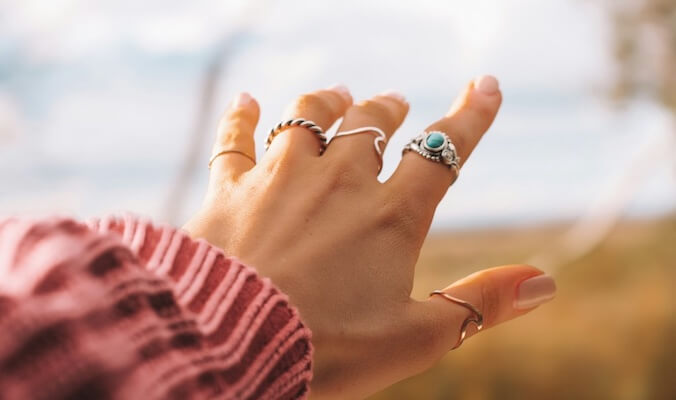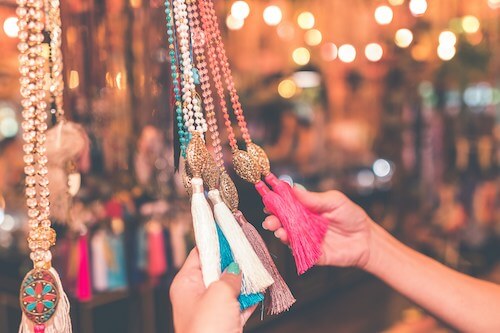Ethical Jewelry: What You Need to Know

© Maddi Bazzocco
For centuries, people have adorned themselves with precious metals and rare gemstones. Whether you choose to wear a subtle, delicate piece or go bold with statement jewelry, wearing these beautifully crafted items boosts our confidence, enhances our natural beauty, lifts our mood and acts as a form of self-expression. Jewelry can also hold sentimental value, and help us to feel emotional connections to loved ones and remind us of cherished memories.
But how can you tell if your jewelry is ethical? Unfortunately, not all gold and silver are forged equally, and the impact of irresponsible mining is devastating to the people of developing countries – where much of the world’s precious metals come from. In the following, we will show you some strategies so you can tell if your jewelry is ethical.
Research the brand
Rather than purchasing new pieces of jewelry, it’s always better to look in thrift shops or second-hand stores for rare, unique items which can easily be cleaned up to add a timeless charm to your outfits. If you do want to buy new jewelry, be sure to do your research on the brand first.
No matter how appealing a brand’s marketing, designs or website may be, it’s their policies and values that matter most. Look for statements around sustainability, Fairtrade practices and ethical sourcing for their materials. But don’t stop there – greenwashing is a real concern in the jewelry industry, as businesses recognize the public’s shift towards more conscious purchasing and attempt to market themselves in alignment, without actually offering any real evidence for their eco-friendly, ethical claims.
Companies that truly care about ethically creating jewelry will be proud to share their annual sustainability reports and will be able to trace their gemstones and metals right back to the source. You can check for ethical certifications such as Fairtrade, The Kimberley Process and The Responsible Jewellery Council.
Choose lab-grown diamonds
Diamonds may be a girl’s best friend, but they carry massive controversy when it comes to sustainability and ethics. These precious stones have long been associated with armed groups and continue to be traded illegally, leaving abuse and violence in their wake. Alternatively, choosing lab-grown diamonds avoids the all too common dire consequences of real diamond mining.

These have the same carbon structure as mined diamonds and you can’t tell the difference with the naked eye. Be cautious when buying other gemstones also, as although most are mined in small-scale operations, many precious stones such as rubies come from countries that are known to use child labor.
Support local artisans
By researching the company carefully and ensuring they uphold their ethical standards, you can be reassured that your jewelry isn’t the product of modern slavery and exploitation. But one of the best ways to reduce the impact of your treasures is to support local artisans who prioritize recycling jewelry into new pieces, and upcycling older items into unique new necklaces, earrings and bracelets. Not only will this help to support ethical jewelry manufacturing, but it will also reduce the carbon footprint of your jewels – boosting your sustainability efforts as well.



